In-app training in SaaS: Formats, benefits & best practices to boost product adoption
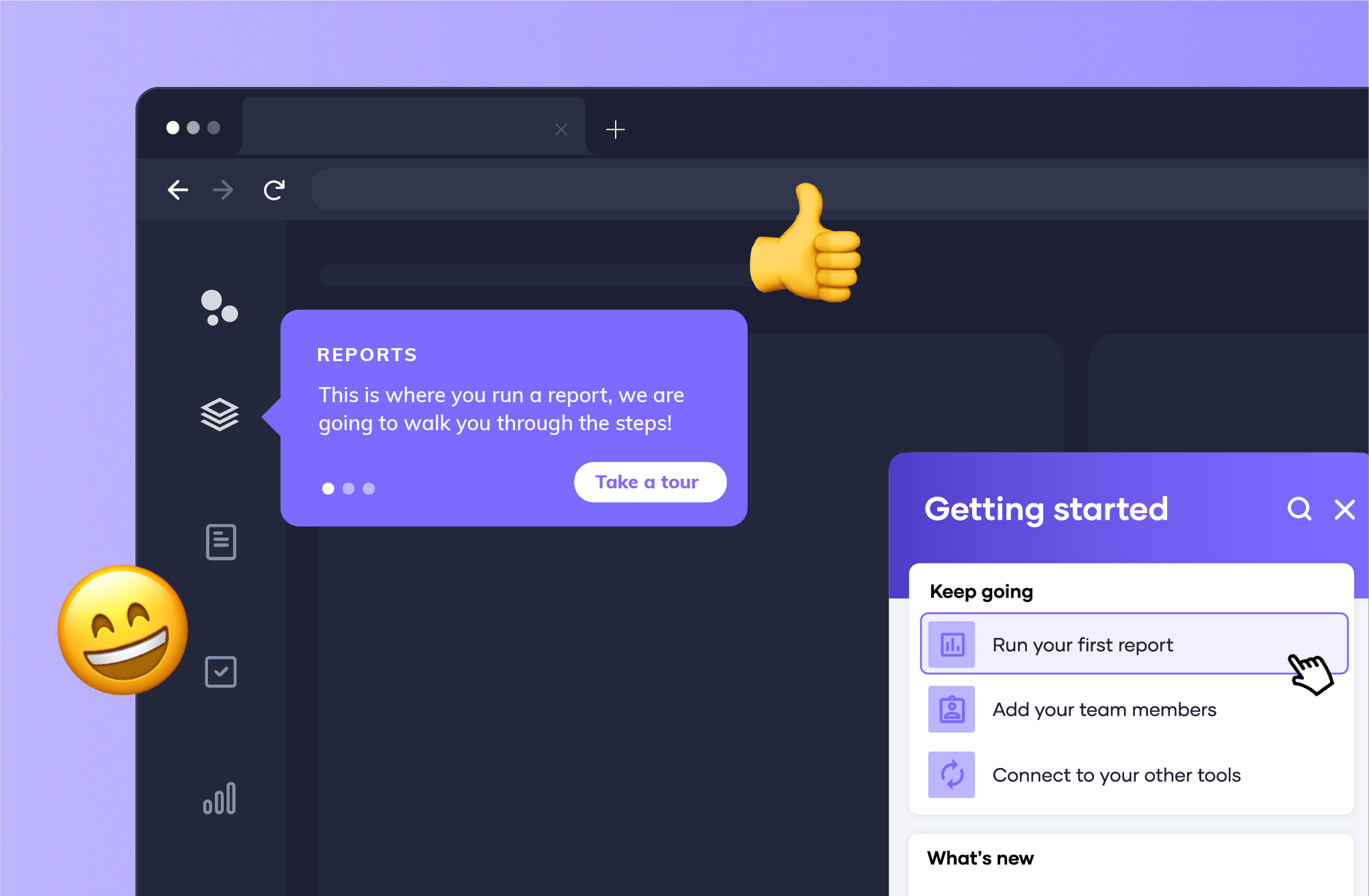
.png)

.png)
As product-led growth (PLG) is more widely adopted, in-app training becomes the foundation you need to offer smooth onboarding and ongoing engagement. In contrast to classic documentation, which tends to remain unused as static assets in a separate help center or knowledge base, in-app training provides contextual, hands-on training.
Think of it as one huge step towards dynamic learning, allowing companies to provide more value at a faster speed and improve user satisfaction in the meantime.
This guide addresses the growing role of in-app training, clarifies its benefits, and shows you how you can create an interactive, in-app training experience to promote retention.
In-app training refers to any interactive, real-time guidance you add to software that allows users to learn features and workflows as they use the product.
In-app training was designed to boost user adoption and reduce frustration, supporting product-led growth.
But its value goes beyond onboarding (when it reduces time-to-value for new users), as you can use it just as well during the rollout of new features or when advanced users need to grasp more complex workflows.
Here are the most memorable benefits you'll get in the user journey:
In app guidance speeds up the user onboarding process by providing guided experiences that create “aha” moments early. These user behavior moments show up when the product’s worth clicks in a user journey. Traditional resources, though, are often static, making it more difficult to "get" the key features quickly (like interactive onboarding does, for instance).
Slack uses in-app experiences that reduce customer success manager time by allowing users to discover and enact core functions. Overall, hands-on outcomes provide quicker results, making new users proficient in less than a week rather than over multiple weeks leading to quicker ROI for both the user and the business.

Interactive and in-app learning speed up feature adoption by encouraging curiosity as part of daily user behavior. When users are guided to try features in conversation—as with scheduling features in Calendly—they’re more likely to adopt the functionalities quickly into their work patterns. This also drives retention since using a product’s key features fosters connections to the product, turning casual users into committed users.
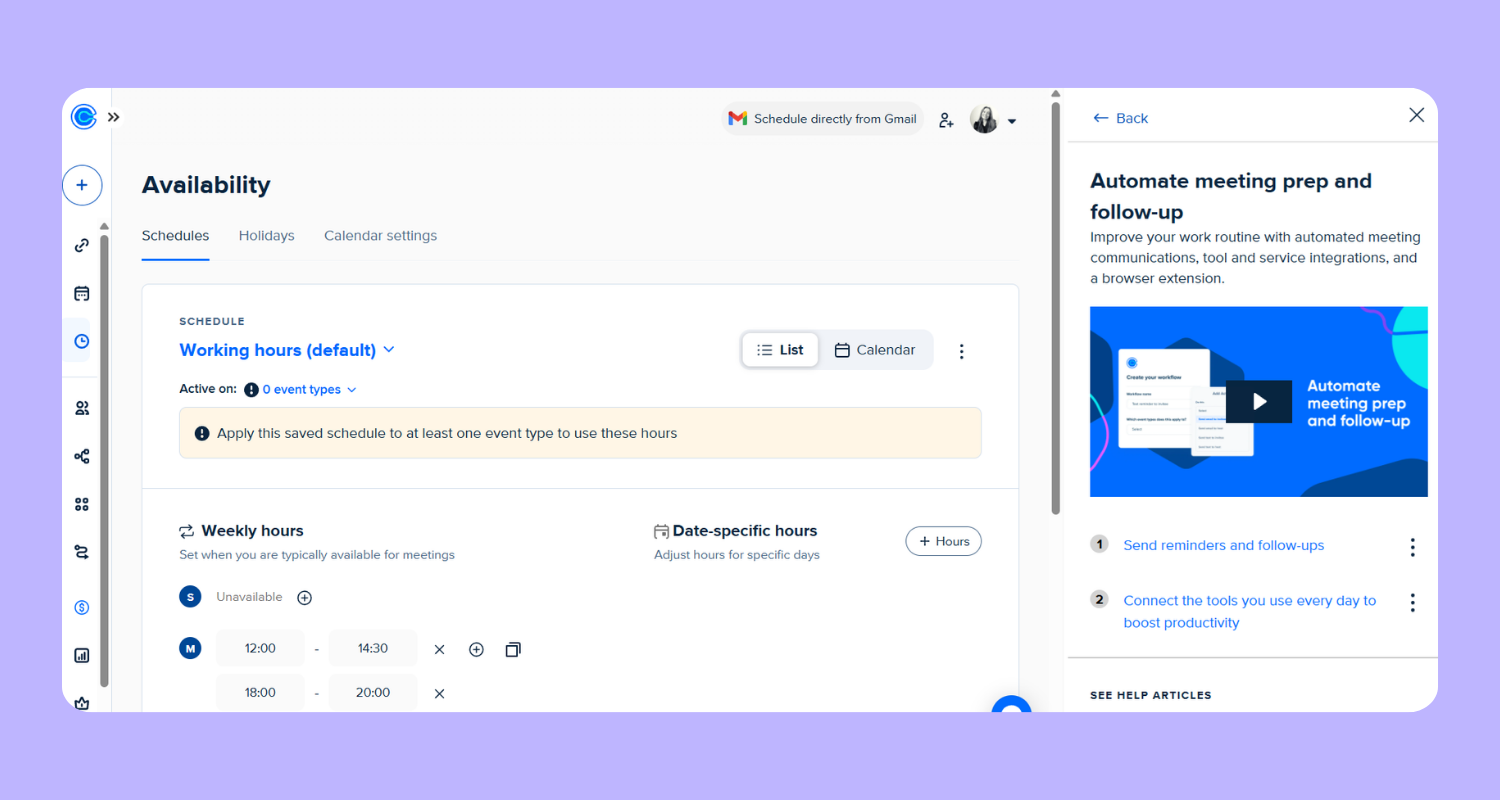
With ongoing in app guidance, users become power users. A great example of contextual smart tips comes from Grammarly. The platform turns to user education bits to guide users as they refine their skills over time. By eliminating frustration in the user interface and unlocking enhanced value, they manage to improve retention rates for existing users and improve their number of activated users.
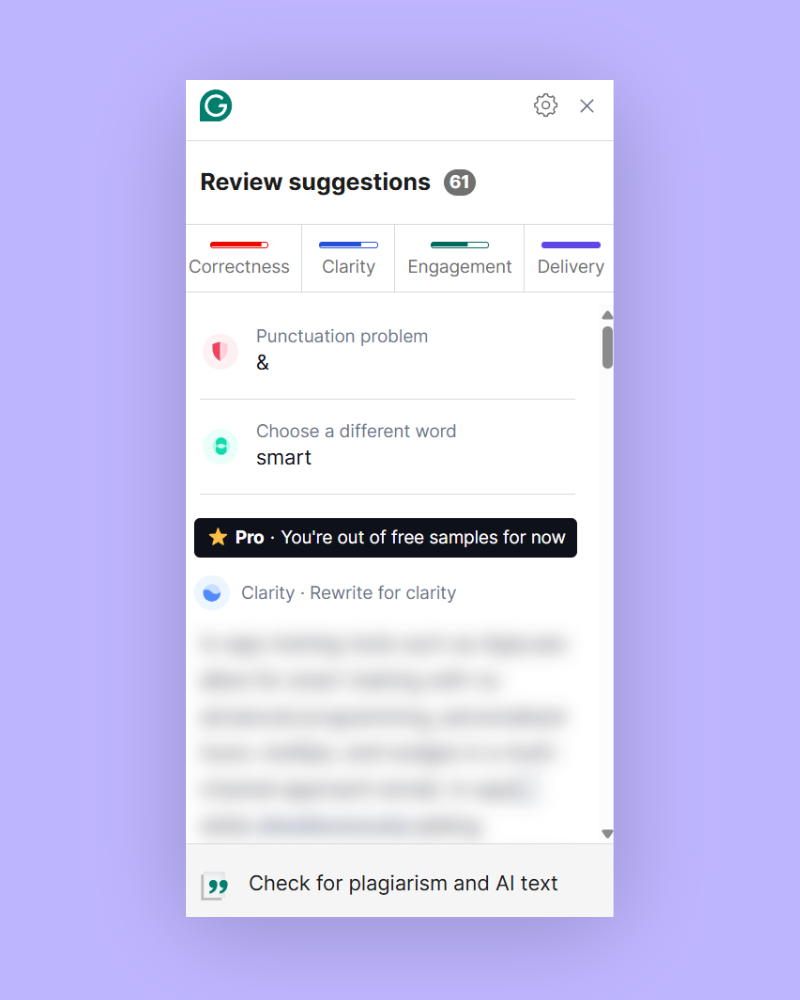
In-app training lets you redirect support inquiries by giving users scalable self-service options within the application. Rather than having to submit a help request, users respond to the issues and fix problems themselves. This reduces the burden support teams would have to deal with should they need to handle constant user requests.
Research suggests that in-app training can reduce overall support costs in addition to ticket volume. Absorb LMS reduced support tickets by 15% by analyzing support tickets and creating self-serve micro-courses to address common customer requests. It also increased its Net Promoter Score by 14% and customer retention rates by 25%.
Contextual in app tutorials highlight value-added features, encouraging users to upgrade. For example, Asana's in-app video walkthroughs feature their advanced project tools to drive conversions by showing real value in real-time. The user gets to see their added value organically, improving user experience and opening the door for upsells.
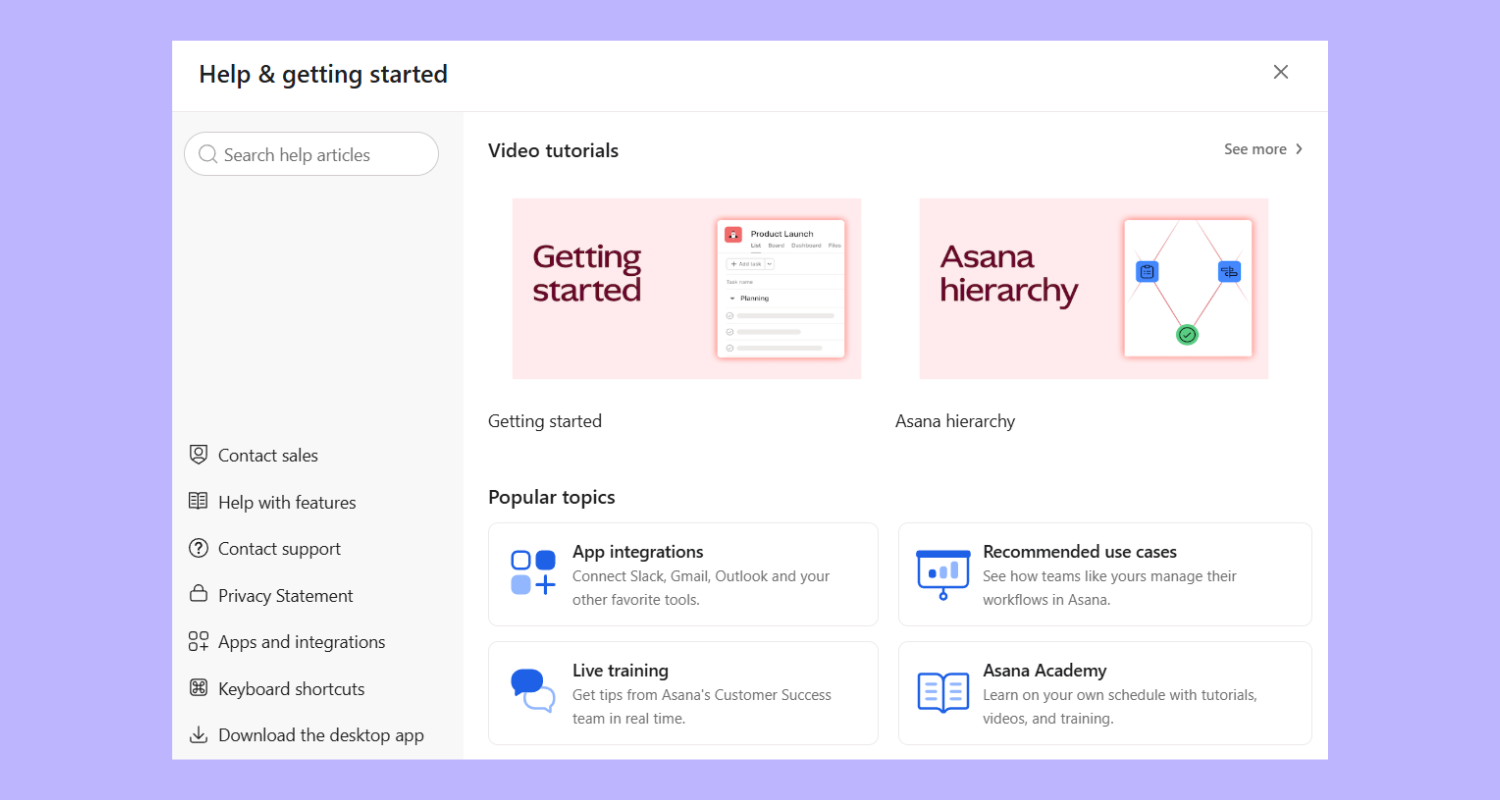
In-app training analytics act as a feedback loop for product teams, showing how people use the in app guidance.
Metrics such as A/B tests on onboarding flows or the drop-off rates after a specific step, like Pendo has users progress through the system, identify areas of friction and opportunity. These statistics support continuous in app training, as well as the product's development itself so you can improve it iteratively based on user patterns and preferences.
You can deliver in-app training sessions in a variety of formats by taking into account user preferences and accessibility. Here are a couple of in app training formats to consider and examples of what they look like in practice:
Product tours and interactive walkthroughs direct users through important flows one step at a time. This gives users the opportunity to see core features in action while learning about their value quickly.
In fact, in this case, learning is activated by the user. They get to experience the product hands on, clicking through prompts and setting up essential actions, workflows, and projects within the app.
Companies like Intercom have included interactive checklist-based tours to make it easier for first-time users to get that "aha" moment that sticks with them. When you hold the user by the hand, they'll get used to your tool faster, so the moment they're done with an onboarding or new feature tour, they'll simply know how to use it.
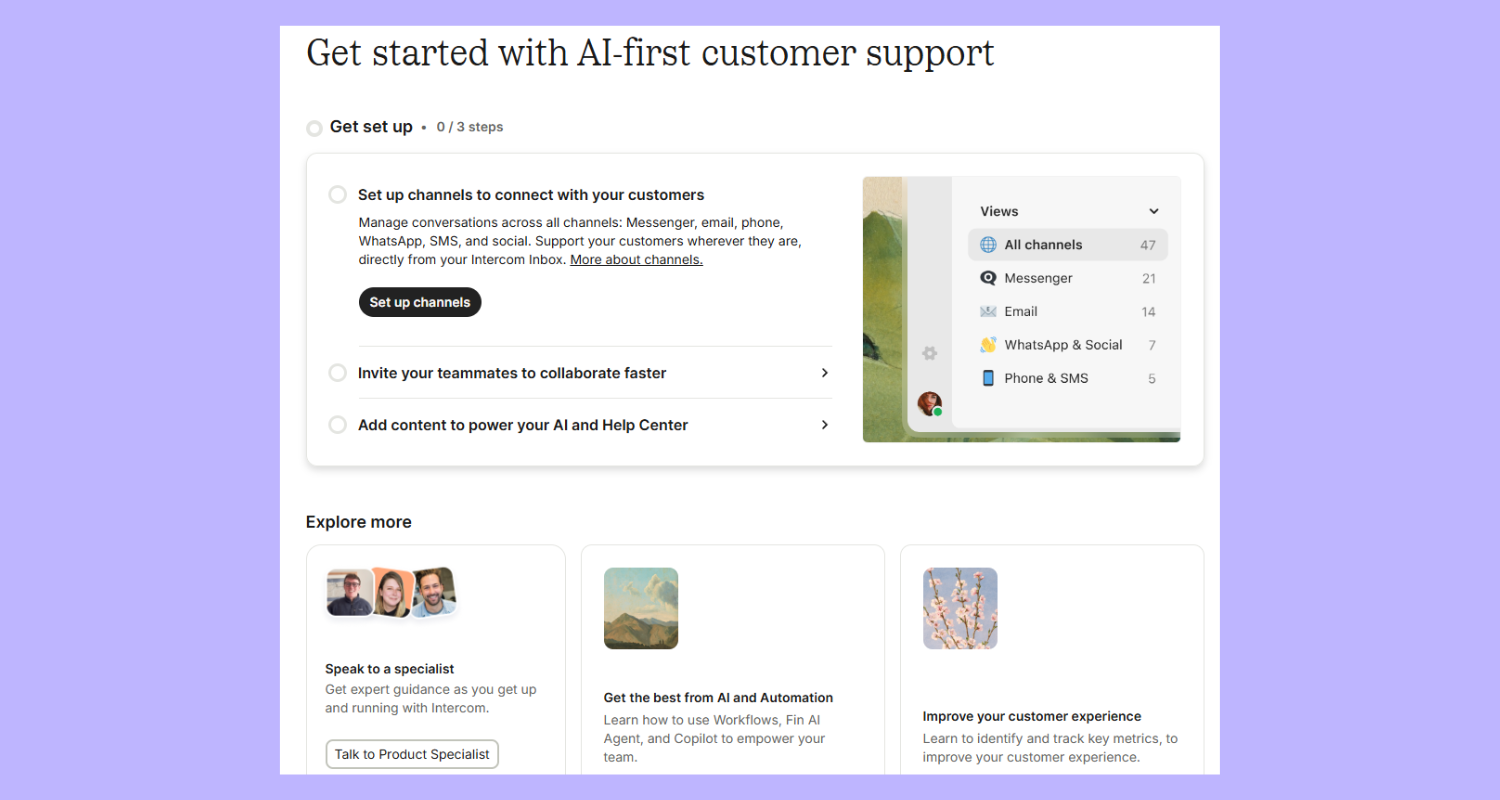
On the same checklist note, onboarding checklists break down vital tasks into an actionable list so users can progress at their own pace. These act like a visual map that won't overwhelm users from the start. Plus, going through each step at a time keeps them confident and more likely to finish the onboarding.
Consider tracking completion so you can trigger the next steps or even rewards at the end. Attention Insight opted for a self-serve checklist that will guarantee the user has a starting workspace they can work with at the end of the onboarding and will understand the tool's core functionalities.
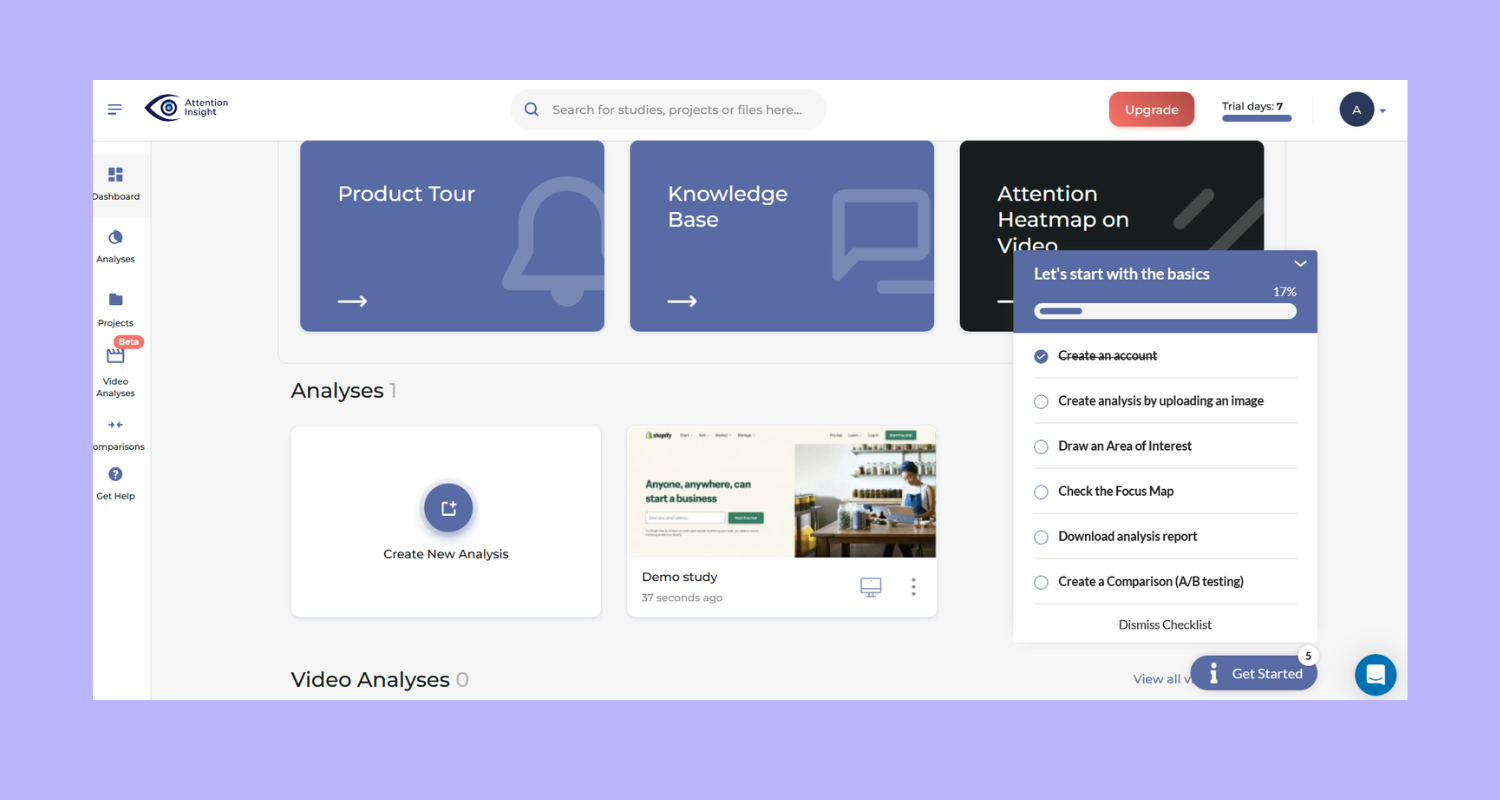
Tooltips and hotspots act like small, in-the-moment learning bits and tips. They work even better after the onboarding process to support the learning process whenever you want to introduce new features, updates, or workflows.
The engagement is light as tooltips and hotspots use lower interference. Yet they're impactful, nudging users toward less-used features they're not familiar with. A great example of this is how Figma uses tooltips to support users with getting to understand their interface and becoming comfortable with all of the small details of what the Figma workflow implies.
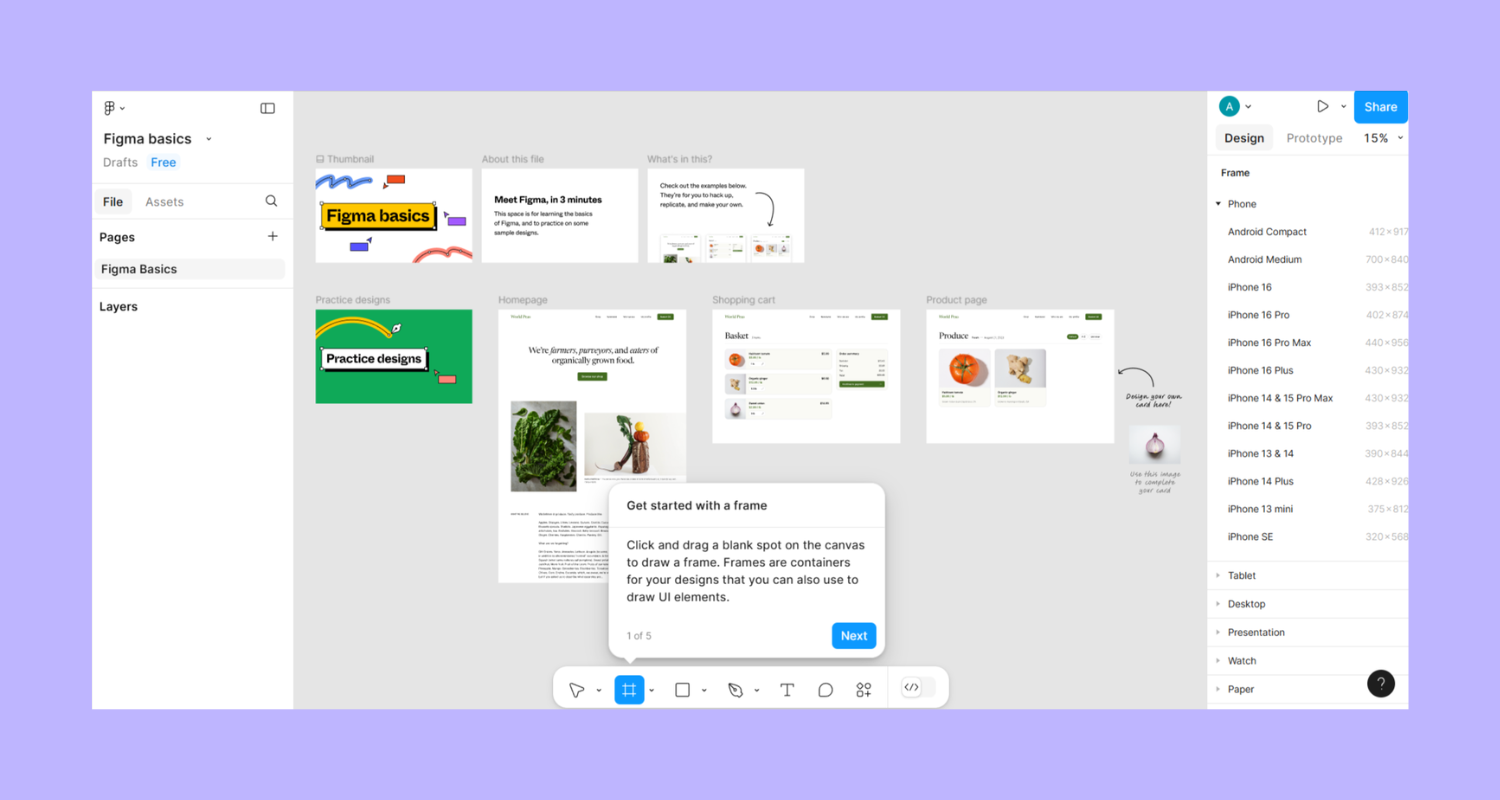
Modal dialogs and welcome pop-ups use full-screen messages to attract attention and can be great for greetings upon a user’s first experience or if you need to make a significant feature announcement.
Overusing classic messages can lead to a boring user experience. That's why products such as Odoo replace the traditional welcome popup with a freebies announcement.
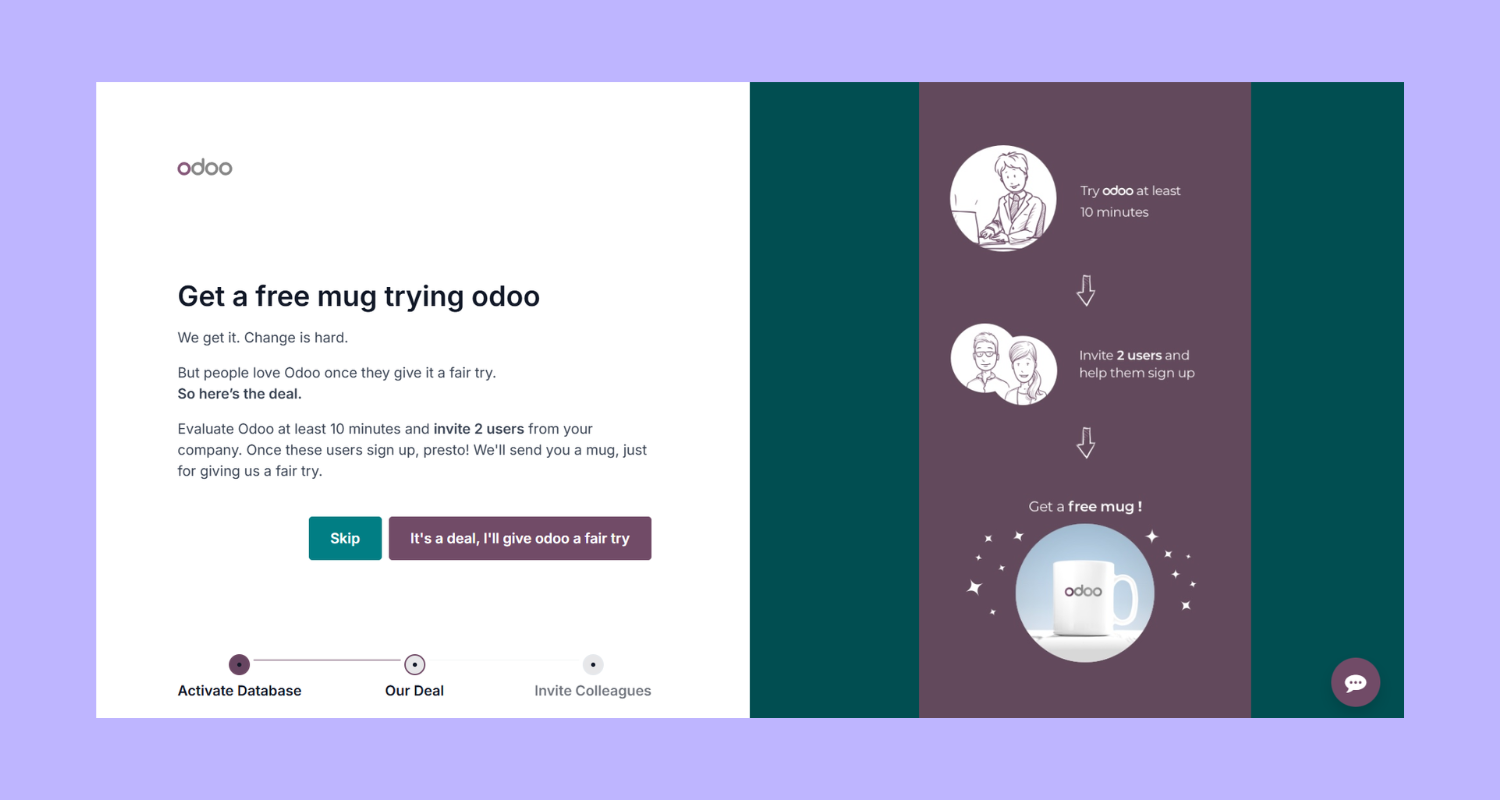
Resource centers provide a self-service center that's part of the app, with "one-click" access to tutorials, articles, and support. Users can turn to these to access a detailed help article or FAQ without having to exit their current screen or workflow.
Here's an example of what the Shopify Help Center looks like once you access it within the app. The setup is simple: Shopify redirects users to a more detailed look at each feature, plus a virtual support assistant to speed up troubleshooting.
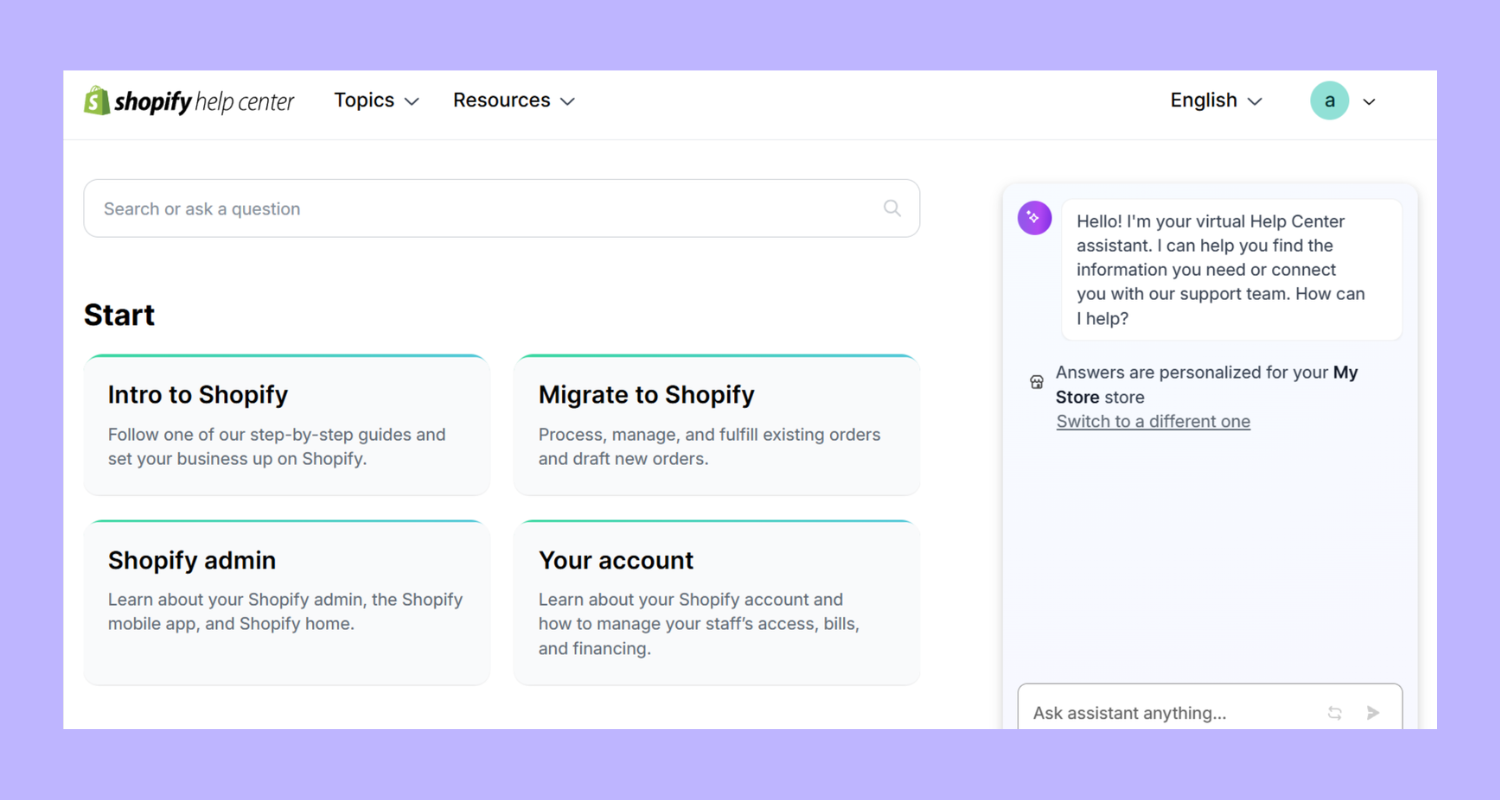
Videos and GIFs should be your go-to way to present a complicated task in breakable information. You can use these to communicate whatever text can't or simply to speed up learning as users can act based on what they hear and see.
Wix opts for videos when introducing new features to create confidence in users, particularly for visual learners:
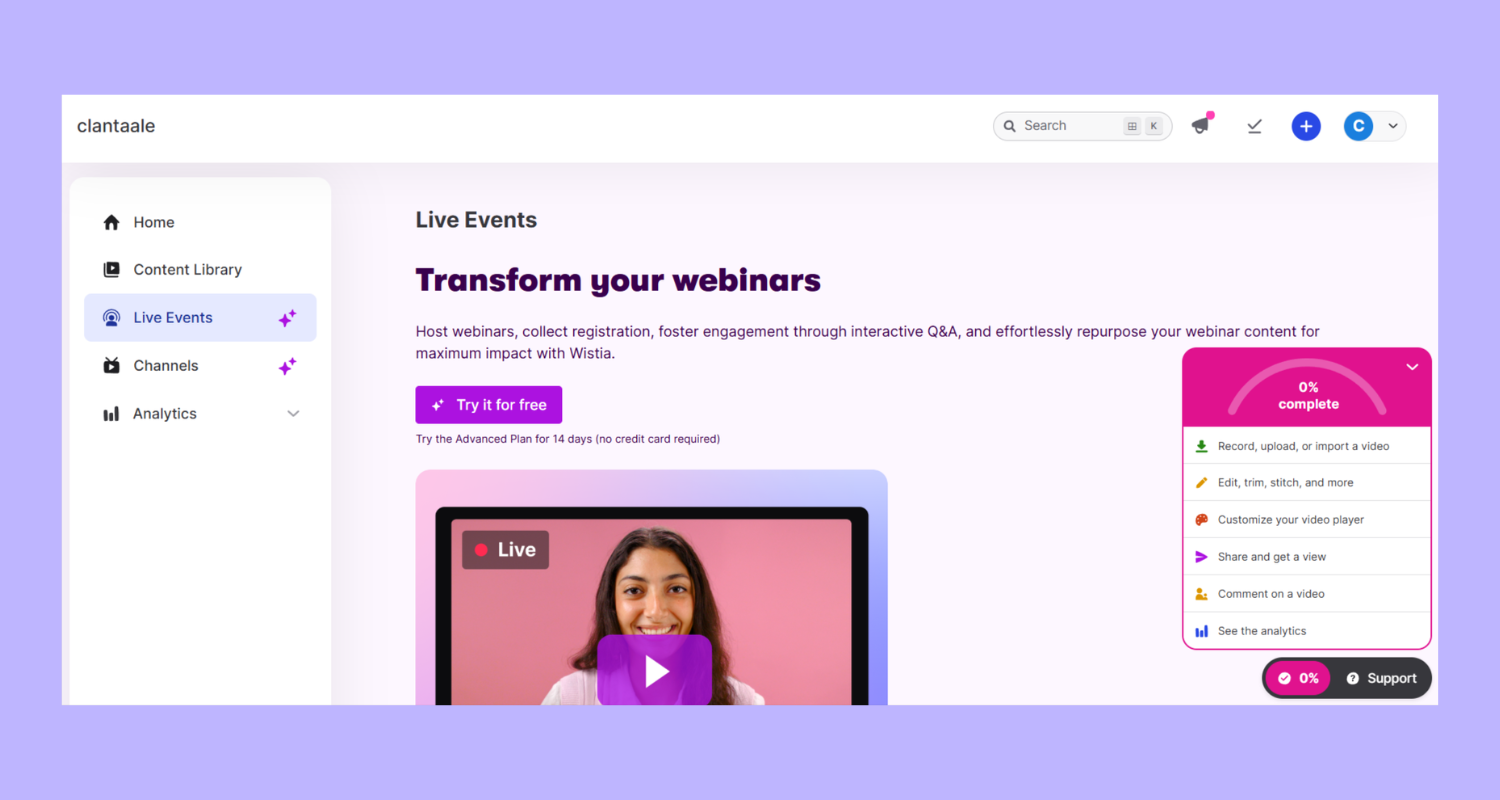
When a user asks a question like "How do I export a report?" they'll receive a direct answer, without having to wait for a response from a real agent. Chatbots serve as a conversational safety net that can catch users who need immediate guidance and then escalate advanced issues to human support.
Gusto pairs chat support with their onboarding to ensure people won't drop off in the middle of the onboarding process. Their AI chat assistant is also trained to answer common questions, which you can even find separately listed on the Gusto website.
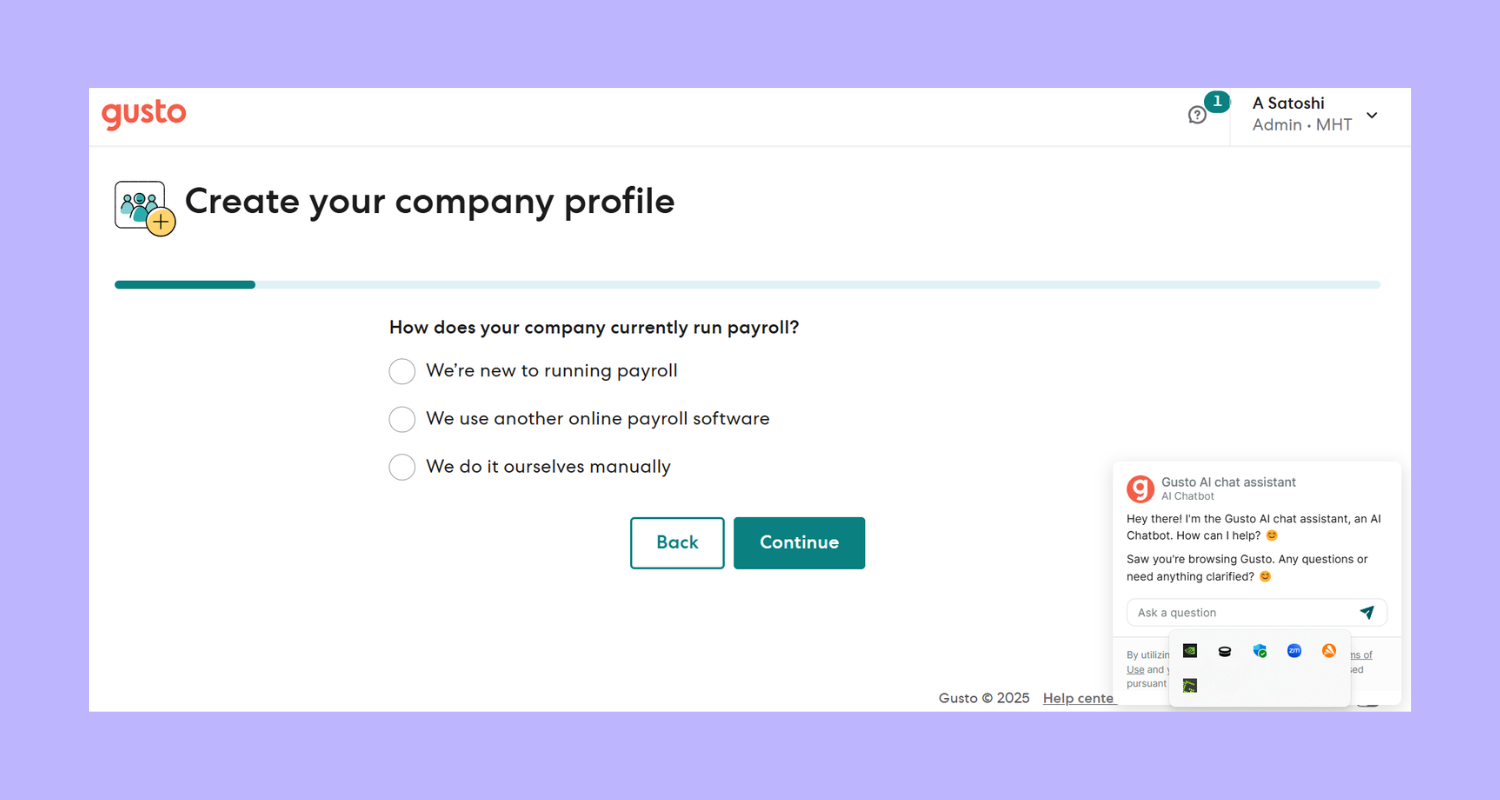
Gamified learning includes rewards, challenges, quizzes, actual games, progress bars, communities, leaderboards, and more. Gamification is better suited for products that are focused on delighting or retaining the user over the long term.
Sololearn is a platform you can use to learn programming skills that uses gamification in the form of coding challenges and quizzes. These let users practice their skills interactively so they can also grow more confident in his or her skills.
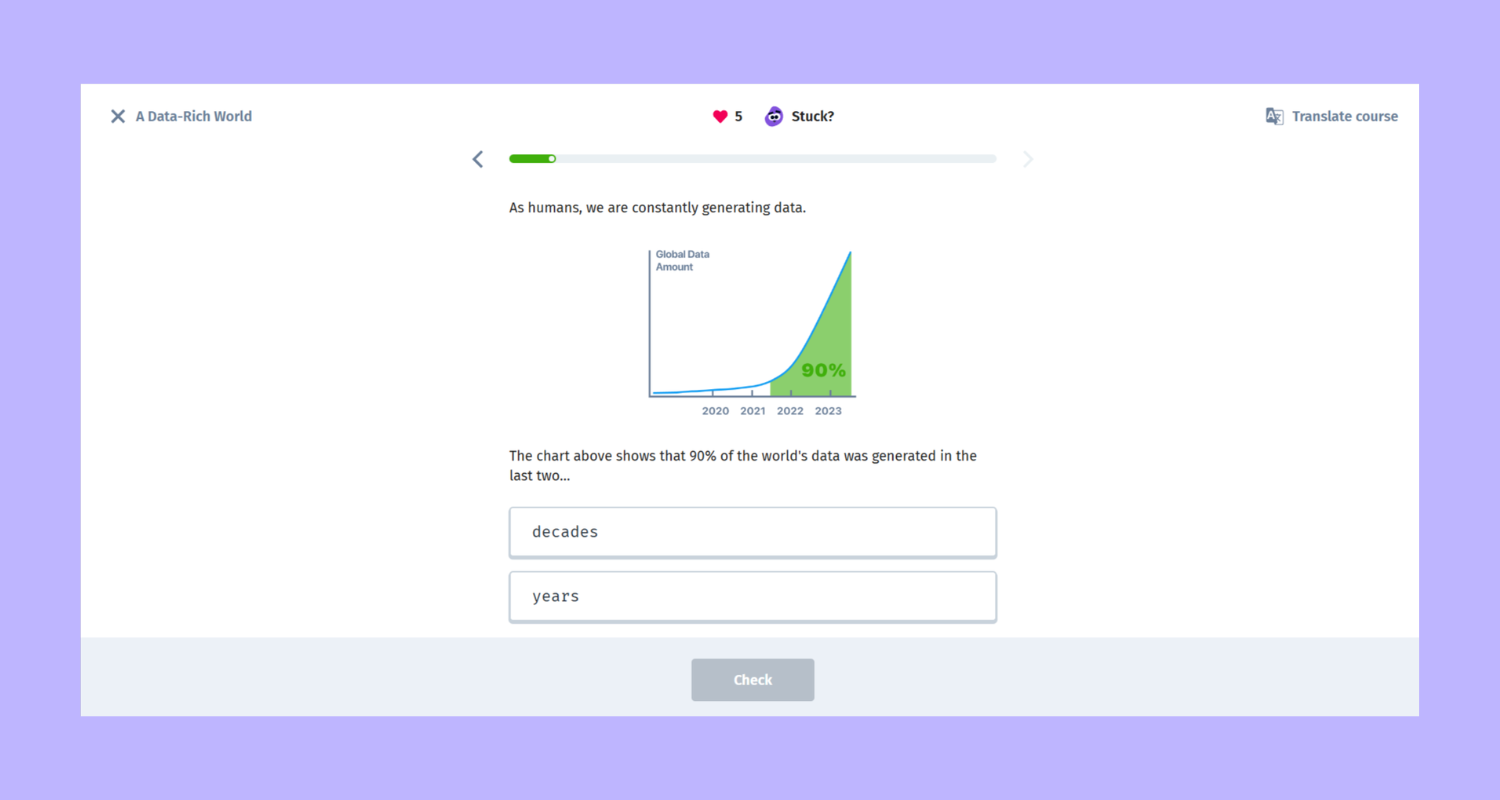
Here's how you can achieve similar results to the use cases above:
Create in app guidance with a clear plan to identify your user personas (like admins and end users), their intent (like task completion), and what success looks like (such as who completed onboarding or how many support tickets were eliminated). Your strategies should be focused on the outcomes, not only the features per se. This can ensure you stay aligned with what users value the most.
Make learning easy to use with timing that feels natural (like only giving assistance when appropriate) and progress indicators to keep users oriented. Don't forget to always give users an option to exit (such as a "skip" or "close" button) so they won't feel forced to go through the training program.
Customize training by breaking flows up by role (marketer vs. developer), lifecycle stage (short term vs. long term), or behavior (frequent feature use vs. occasional need).
Opt for dynamic guidance based on the user intent so the training experience will seem to understand where a user is stuck or if they need some extra help to try out more advanced features or workflows.
Pick tools that meet your needs: no-code platforms like Appcues (easy workflows, in-app messaging, push notifications, and more), Pendo (strong analytics), or Whatfix (enterprise scalability). Try these out based on how easy they are to use, what analytics opportunities they provide, and what features you need right now to fix your most pressing challenges.
As the product matures, allocate ownership (e.g. to product or CS teams) for content updates so that it's current. Use analytics and user feedback to improve flows by testing variations, such as shorter steps and clearer CTAs.
Appcues gives teams the tools they need to facilitate smarter in-app training by combining personalization, multi-channel reach, and detailed analytics in a single no-code platform.
Appcues lets you design personalized training through an easy-to-use visual editor. You can create interactive tours to take users step-by-step, tooltips to share quick contextual tips, modals to make an impact with announcements, and more—all geared towards user roles, behaviors, or lifecycle stages to make learning feel timely and relevant, enhancing engagement and mastery.
The platform takes training out of the app by integrating email and push notifications to reinforce learning on the channels and devices people use the most. For example, you can create an in-app tour to introduce a new feature. Then, you'd send an email a few days later recapping the feature and its benefits or a push notification to nudge users to use the feature.
You can measure how effective your training is with built-in analytics tracking engagement, completion rates, and shifts in behaviors. A/B testing allows you to test and adapt flows, while in-app surveys let you ask users for feedback. Together, these allow for confident training iteration that adapts to every user's needs.
In-app training changes the way we do product-led growth by giving you a better tool for improving engagement, reducing support costs, and enhancing customer education. It leads to faster onboarding, greater feature adoption, and even improved revenue while decreasing support costs and generating upsell opportunities.
Integrating learning into the product provides a contextual, real-time learning experience that static help centers will never be able to deliver. All this is done by meeting users where they are, when they most need it. This makes for a user-first, strategically planned training program that relies on clear goals, intuitive design, and continuous improvement to maximize impact and convert users into confident, brand-loyal advocates.